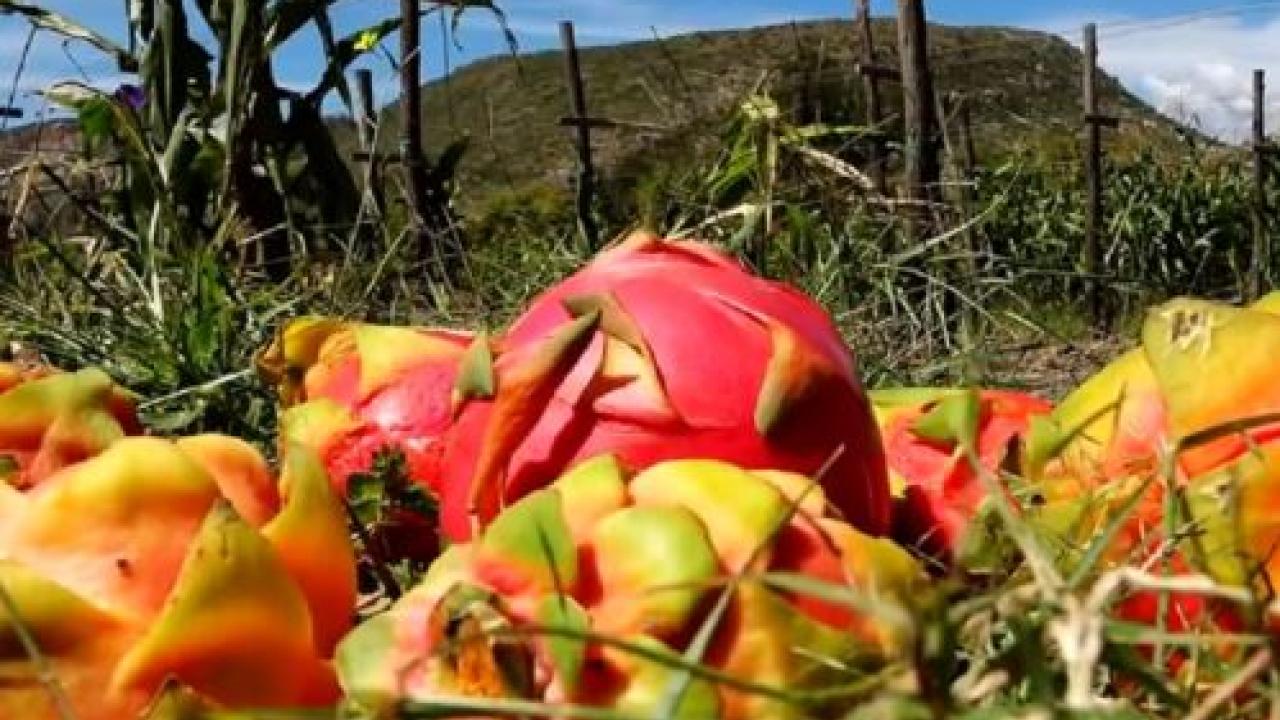
After a record year in 2023, when exports increased by 72%, Ecuadorian pitahaya prepares for a new production and export boom following the implementation of the trade agreement with the Asian giant, which since May will eliminate the existing 20% import duty on the fruit.
Known as the “dragon fruit”, the Ecuadorian pitahaya produced in the Amazon region is experiencing momentum. This fruit's exports reached US$ 171.7 million in 2023, 72% more than in 2022. Another export boom is expected following the enforcement of the Ecuador-China trade, which starting May 1 will eliminate the 20 % import duty for the Ecuadorian pitahaya entering the Chinese market.
“The [value of] the Chinese pitahaya import market is around US$450 million, and Vietnam currently is the only supplier of the fruit,” detailed from the Ecuadorian Federation of Exporters (Fedexpor). "In this sense, once the agreement comes into force and considering that Ecuadorian pitahaya already has sanitation permit to enter said market, Ecuador would be in a position to compete."
As the main exporter of yellow and red pitahaya in the region, Ecuador produces yellow (90%) and red pitahaya (10%) with around 15,000 families directly related to the business. The United States is the main destination of the Ecuadorian pitahaya, with an export value of US$ 136.1 million (80% of shipments), followed by Hong Kong (6.55%), Spain (3.53%), Peru (2. 35%) and Canada (1.85%), reported the Ministry of Production, Foreign Trade, Investment and Fisheries.
"It is necessary to achieve greater crop technology to improve yields, continue with the work on commercial and sanitary aspects to find destinations where this fruit can be shipped, as well as to differentiate the product with the highest standards of environmentally and socially sustainable production”, Fedexpor added.
The promotion the pitahaya's benefits in the context of global trends towards healthy eating drives underpins the fruit's demand and bodes a promising future, even if Ecuador does not set a minimum producer price for pitahaya, unlike Vietnam, China and Indonesia--the world's main exporters of the fruit, contributing to 90% of its global production.
“China and Hong Kong pay the highest, at US$ 7 per kilogram,” said Alex Bustos, agronomist and president of Green Control LA.
The Ecuadorian pitahaya is grown in the provinces of Guayas, Morona Santiago, Manabí and Santo Domingo de los Tsáchilas. Its yellow variation is sold to Peru and Colombia, both markets accounting for 29% of total shipments abroad. These countries buy Ecuadorian pitahaya at US$ 0.31 and US$ 0.17 per pound, respectively, because the fruit is considering of "national or second quality". In fact, 60% of total production consists of yellow pitahaya, the analyst continued, and he added that the solution is to increase quality.
"Although Ecuador exports pitahaya to Peru and other Latin American countries, the main markets to target should be those that can buy the fruit in a sustainable fashion, among these, the United States, the Middle East, and other regions where quality and the particularities of the Ecuadorian fruit can be better valued,” Fedexpor stated.
PERU'S OPPORTUNITY
Ecuador's neighbor also registered a pitahaya boom. Although exported value was way lower in 2023 (US$ 212,676), its growth of 1,071% (US$ 212,676) boosted interest in production and export of a variety different from the Ecuadorian one.
Peru mainly exports the ' American Beauty ' or red variety, with the Netherlands as main destination on the back of Camposol's subsidiary, responsible for 87% of total Peruvian export volumes. According to data provided by business association ComexPerú, approximately US$ 178,848 of the total pitahayas exported last year came from said company.
“Today in Peru little is produced, although it has tremendous potential”; said Gabriel Amaro, president of the Association of Agricultural Producers Guilds of Peru (AGAP) to AméricaEconomía . “The problem is that we do not have authorization to access the main markets: the United States and Asia.”
To receive authorization, he explained, they work with the National Agri-Food Health and Quality Service (SENASA), which in 2020 requested the authorities of the United States and China - the main consumers of this fruit in the world - phytosanitary access.
"The process with the United States is very advanced and we hope that in 2025 we will complete access. In 2024 we will have access for strategic products such as fresh asparagus and aguaymanto (golden berry), whose efforts began before 2020," explained Orlando Dolores, general director of plant health at SENASA to AméricaEconomía . "With China and other Asian countries, bilateral meetings are being held in order to expedite the process of products already started with a view to prioritizing this fruit."
In that sense, Peru's office for exports and tourism (Promperú) indicated that within the implementation of the 'new silk route', the port of Chancay would be a key route for the fruit's entry to China because it will become a regional hub that will redistribute the cargo of Peru, Chile, Ecuador and Colombia.
“For this 2024, Peruvian exports of this fruit are destined to the European Union, where exported volume in 2023 exceeded 104 metric tons (MT), and in the first quarter of this year more than 115 MT are already registered,“ said Dolores.
The main exporting companies are Camposol, Organic Peruvian Foods, North Valley, Roque Molina Inversiones, Blossom International Perú, Apollo International Ship Suppliers, and Fruitxchange.










